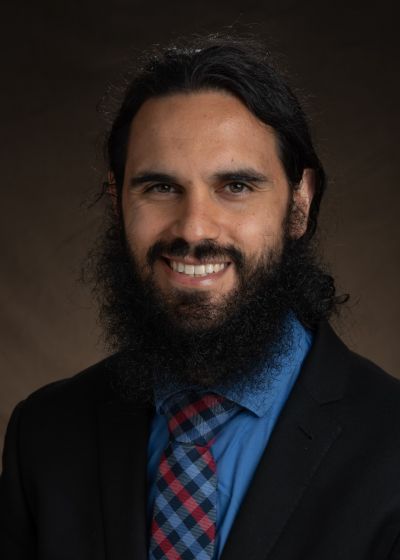James Caton, 2024-25 HOPE Center Visiting Scholar

During his undergraduate years—years that overlapped with the 2008 financial crisis—James Caton began reading about monetary history and theory, books by leading authorities such as Barry Eichengreen, Peter Temin, Christina Romer, Friedrich Hayek, and Murray Rothbard.
He expected to form a clear understanding of the subject. “But no one book,” says Jim, a 2024-25 HOPE Center Visiting Scholar and Associate Professor North Dakota State University, “seemed to have the answers I was looking for when it came to monetary economics.”
It’s not that the books failed to convince him. Rothbard, for example, was “very persuasive—especially to a young person,” says Jim, a professor of economics at North Dakota State University. “The story Rothbard tells identifies a culprit, and a culprit always makes for a good story.”
But the more Jim read, the more he realized that some accounts omitted, deemphasized, or overstated certain details and events—that each book, in short, was constructing and offering a particular view.
“I began to see the importance of narrative in history, that every history is a narrative designed to convince the reader,” says Jim, who grew up in Indiana and California.
“And the more you find yourself convinced,” he cautions, “the more you should be suspicious.”
The whole process taught Jim the importance of being critical. “The historians I see as intellectual allies, those are the ones I should question the most.”
Jim’s interest in monetary history and theory have remained with him to this day. In recent years, he has published articles on Friedrich Hayek’s thought on gold and monetary standards and on the contemporary public finance economist Richard E. Wagner, as well as on articles on related topics such as entrepreneurship and the social contract.
After completing a master’s in economics as San Jose State University, he went to George Mason for a PhD, intending to write about the Austrian economist Friedrich Hayek and the Great Depression. But he soon became interested in methodology, especially with the assumption of equilibrium.
“I went to GMU thinking that the methodology problem, in particular our handling and use of the equilibrium assumption, had been settled and I was going to get the truth. But I quickly learned that the issues are anything but settled.”
Jim points to Hayek as an instructive example. “Before 1937, Hayek, like many other economists, simply assumes equilibrium. But beginning with his famous 1937 article on economics and knowledge, Hayek begins to wonder. How does equilibrium manifest itself? What problems arise if we assume equilibrium?”
Jim’s engagement with the equilibrium assumption led to his principal ongoing research project, one in which Jim is developing a framework that does not assume equilibrium, but rather, one where equilibrium is a possible outcome of social processes. The key to the new framework, he says, is agent-based modeling, which simulates the simultaneous operations and interactions of consumers, firms, and governments.
His main project, of course, has opened up related projects. At the HOPE Center, Jim began exploring Hayek’s contribution to the development of neural networks after the second World War. He is also drawing on Hayek and one of Hayek’s Austrian predecessors, Carl Menger, the Austrian contributor to the marginal revolution, in developing a modeling apparatus consistent with both economic and computational theory.
When asked about his undergraduate years, Jim says he was “searching.”
“It’s funny, but I didn’t care about the subjects I studied in high school until I was out of high school. Then I suddenly wanted to understand the world, and saw education as the way to do that.”
The education was not always formal. Jim took a year off from college, for instance, and spent the entire time reading books that he acquired from the old paperback swap system. “A friend of mine gave me romance novels, and I’d swap them for philosophy and political economy. That’s how I first came to read Marx and Austrian economists like Menger and Hayek—in a roundabout way, through the romance novel!”